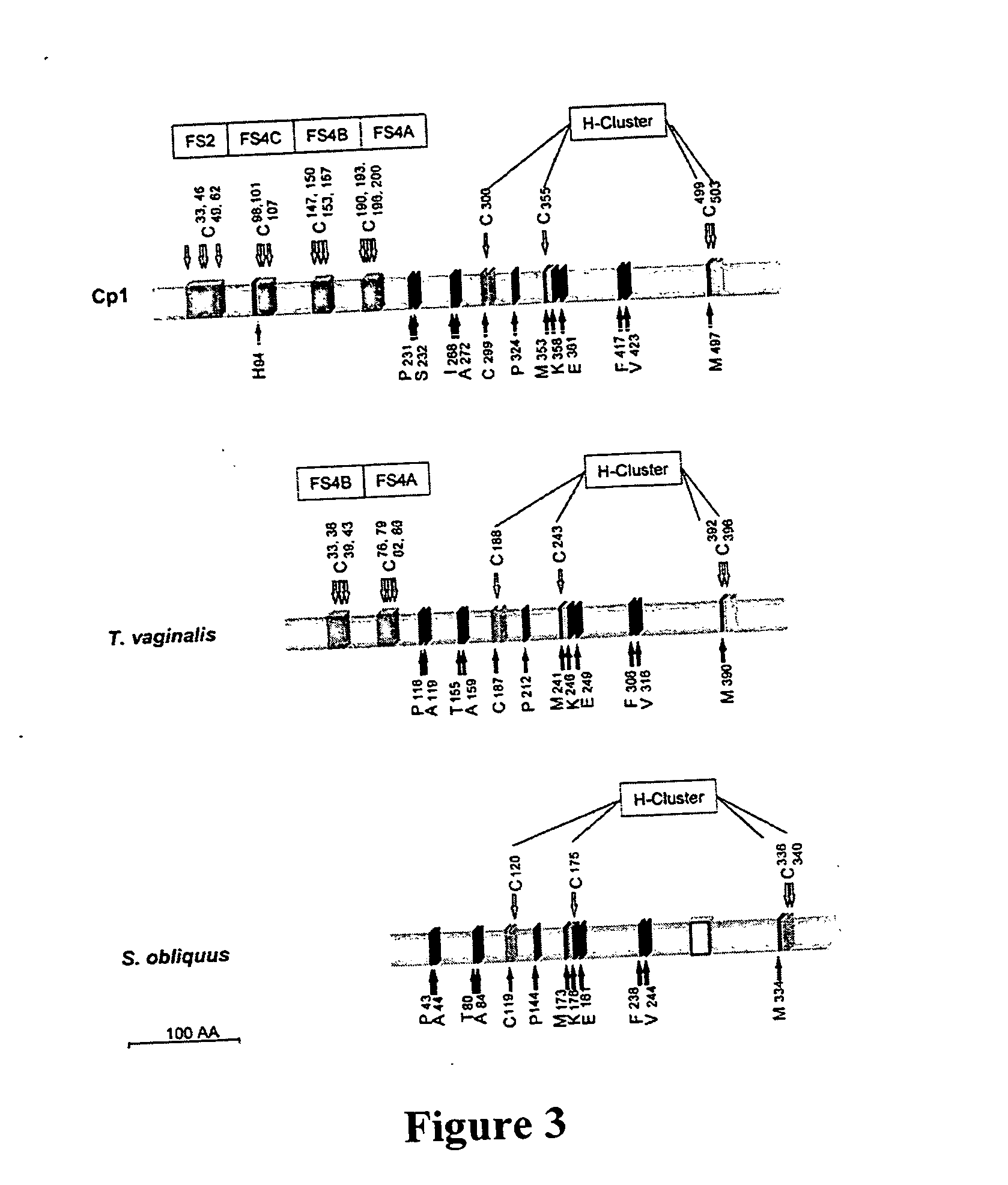Hydrogen production
- Summary
- Abstract
- Description
- Claims
- Application Information
AI Technical Summary
Benefits of technology
Problems solved by technology
Method used
Image
Examples
Embodiment Construction
[0023] The isolation, purification and biochemical and genetic characterization of a novel iron hydrogenase from S. obliquus and C. reinhardtii and C. fuscus is disclosed.
I. Scenedesmus obliquus
S. obliquus Algal Strains and Growth Conditions
[0024] Wild-type S. obliquus Küitzing 276-6 was obtained originally from the culture collection of algae at the University of Gottingen. Cells were cultured photoheterotrophically in batch cultures at 25° C. under continuous irradiance of 150 μmol photons per square meter per second. For anaerobic adaptation, 4-liter cultures were bubbled with air supplemented with 5% CO2. After harvesting the cells in the mid-exponential stage of growth, the pellet was resuspended in fresh Tris acetate phosphate (TAP) medium. The algae were anaerobically adapted by flushing the culture with argon in the dark.
[0025] The in vitro hydrogenase activity was measured by using a Hewlett Packard (HP 5890, Series II) gas chromatograph, equi...
PUM
| Property | Measurement | Unit |
|---|---|---|
| Fraction | aaaaa | aaaaa |
| Nucleic acid sequence | aaaaa | aaaaa |
Abstract
Description
Claims
Application Information
 Login to View More
Login to View More - R&D
- Intellectual Property
- Life Sciences
- Materials
- Tech Scout
- Unparalleled Data Quality
- Higher Quality Content
- 60% Fewer Hallucinations
Browse by: Latest US Patents, China's latest patents, Technical Efficacy Thesaurus, Application Domain, Technology Topic, Popular Technical Reports.
© 2025 PatSnap. All rights reserved.Legal|Privacy policy|Modern Slavery Act Transparency Statement|Sitemap|About US| Contact US: help@patsnap.com



